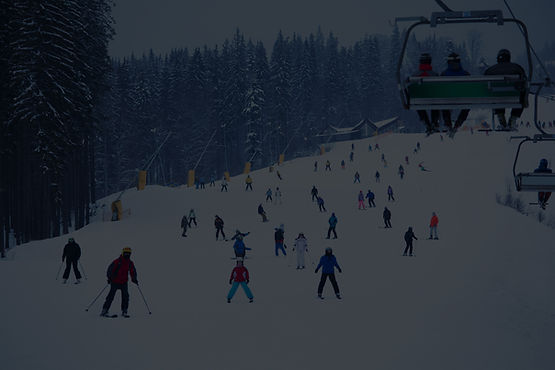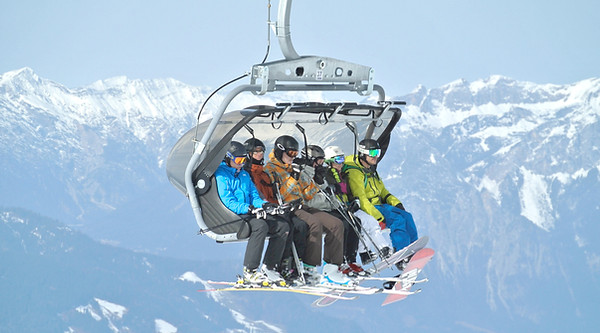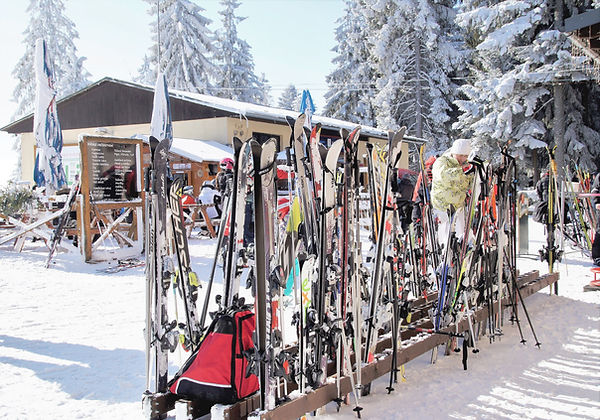
Breaking the Bottlenecks
How Ski Resorts Can Keep
Guests and Revenue Moving
14 AUG
Blog
5 min read
Bottlenecks in parking, rental, and lift operations can reduce daily guest throughput by up to 12%, leading to significant lost revenue each season (1)
Ski resorts are complex operations with thousands of moving parts, both mechanical and human. When everything flows smoothly, guests enjoy more runs, spend more time (and money) on the mountain, and leave with positive experiences that turn into repeat visits. But when operational bottlenecks creep in, the opposite happens: guests wait more, spend less, and walk away frustrated.
Some choke points are obvious, like long lift lines during peak hours. Others hide in plain sight, slowing down the guest journey in ways that quietly erode capacity, revenue, and satisfaction. The good news is that these bottlenecks can be addressed with both tactical fixes that deliver results quickly, and strategic investments that create lasting efficiency gains.
Below, we break down five common operational bottlenecks in ski resorts, from lifts to lunch queues, with benchmarks, quick wins, and longer-term solutions.
Trail Map - Skip to a Section
1. Chairlift Loading Efficiency and Dispatch Timing
Even small inefficiencies in lift loading add up fast. A well-run quad chair with a 6 second dispatch interval moves about 2,400 guests per hour. Add just a 2 second delay per dispatch and you have instantly cut daily capacity by hundreds of rides, creating longer queues and uneven distribution across the mountain.
DIY?
Optimal dispatch intervals for fixed-grip and detachable quad lifts are typically 6 to 7 seconds per dispatch when operating at peak efficiency (2)
Quick win: Position trained “loaders” at busy lifts during peak hours to help guests group correctly, move quickly, and load without hesitation. This small staffing shift can have a significant impact on keeping dispatch intervals tight.
Long-term fix: Install loading conveyors or automated gates to enforce consistent chair spacing and remove reliance on guest reaction time. These systems are already common in Europe and are increasingly being adopted in North America for both safety and throughput benefits.

2. Parking Lot Throughput and Guest Arrival Flow
The guest experience starts long before boots hit the snow. Congested parking areas not only cause frustration but also delay guests’ arrival to lifts, creating big spikes in mid-morning queues. For large resorts, this can throw off lift balance for the rest of the day.
DIY?
A 2011 trip generation study at Bridger Bowl Ski Resort in Montana observed that, during peak arrival times, parking lots reached 90% occupancy by 9:00 AM, indicating that early arrival is crucial to securing parking and avoiding congestion (3)
Quick win: Reassign seasonal or part-time staff to direct vehicles at choke points during the first 90 minutes of opening. This is often the single most cost-effective way to prevent morning gridlock.
Long-term fix: Use real-time parking availability systems combined with computer vision to monitor lot occupancy and display via dynamic signage on site and a resort app. When guests can see where spots are available before they arrive, it naturally spreads out demand and eases pressure on your main lot, while giving operators actionable insights to optimise flow.
3. Signage, Wayfinding, and Guest Navigation
If guests cannot easily find lifts, rental areas, ticket counters, or dining, they end up wandering, often into areas already under pressure. Poor navigation does not just frustrate guests, it concentrates crowds in the wrong places and reduces time spent skiing or spending.
Quick win: Place clear, high-contrast temporary signage at known confusion points. Even printed, laminated boards on sturdy stands can make a difference during high-traffic days.
Long-term fix: Implement a GPS-enabled resort app that provides real-time navigation based on lift status and crowd density. If a major lift closes, the app can instantly redirect guests toward available alternatives, smoothing flow across the mountain.
DIY?
A study on Ski Arlberg's implementation of SkiVis (a visual analytics application for ski route planning), demonstrated that integrating real-time data and user preferences into navigation tools improved skier satisfaction and route efficiency, highlighting the importance of personalised wayfinding solutions in ski resorts. (4)
4. Rental and Equipment Fitting Delays
For first-time visitors and beginners, the rental process is their first impression of your resort’s operations. Long waits here can sour the experience before they even step on snow. Worse, guests stuck in rental queues are not spending in food outlets or contributing to lift throughput balance.
DIY?
Rental wait times can range from 15 minutes to 2 hours, though some resorts let you pick up gear the day before
Quick win: Pre-sort guests by shoe size or skill level before they enter the fitting zone. This prevents bottlenecks caused by mismatched needs and allows staff to work in a more linear flow.
Long-term fix: Introduce online equipment reservations linked to RFID-enabled storage systems. With gear pre-assigned and pre-set, staff can hand over correctly sized equipment immediately, cutting queue times drastically.

5. Food and Beverage Queue Spikes
Midday lunch surges can pull hundreds of guests off the mountain within a concentrated window. If queues are slow, guests return to lifts in large numbers, creating a second peak in the afternoon. This ripple effect can reduce terrain balance and push afternoon waits beyond acceptable levels.
DIY?
Food-line wait times at ski resorts often stretch from 15 to 45 minutes at peak lunch, making packing snacks or timing meals outside the 12:30–2 PM rush a smart move.
Quick win: Offer mobile ordering for popular grab-and-go items so guests can collect food without queuing. Promoting this through the resort app or digital signage can quickly shift behaviour.
Long-term fix: Use historical sales data to guide prep schedules and staffing. By analysing patterns from previous seasons, operators can anticipate peaks, such as a surge in hot food orders between 2pm and 3pm, and deploy extra kitchen staff or batch-cook popular items just before the rush. Combining this with dynamic staffing, where team members are shifted in real time based on current demand, ensures decisions are informed rather than reactive, keeping queues shorter and guests happier.
Final Thoughts
Each of these bottlenecks impacts revenue, guest satisfaction, and operational efficiency in different ways, but they all share one thing in common: they are measurable and fixable. The most successful resorts don't just solve bottlenecks when they appear, they track them in real time, address them proactively, and use historical data to prevent them from reappearing.
That is where data-driven tools make the leap from nice-to-have to becoming essential for operations. By tracking crowd flow, lift throughput, and service times across the resort, you can spot emerging bottlenecks before they turn into guest complaints or lost revenue.
If you’re a snow operator navigating these bottlenecks, or trialing new ideas, we’d love to hear what’s working for you!
Thanks for reading! Brought you by Nola, a ski lift analytics software for ski resorts.
Keen to know more? Check out our Learn page for more articles, or, reach out directly for a chat.
(1) arXiv:2011.11976v1 [cs.MA]
(2) https://www.saminfo.com/archives/2010-2017/2018/july-2018/know-your-capacity
(3) https://www.westernite.org/datacollectionfund/2011/MSU Final Report 2011.pdf?
(4) arXiv:2307.08570v2 [cs.HC]
